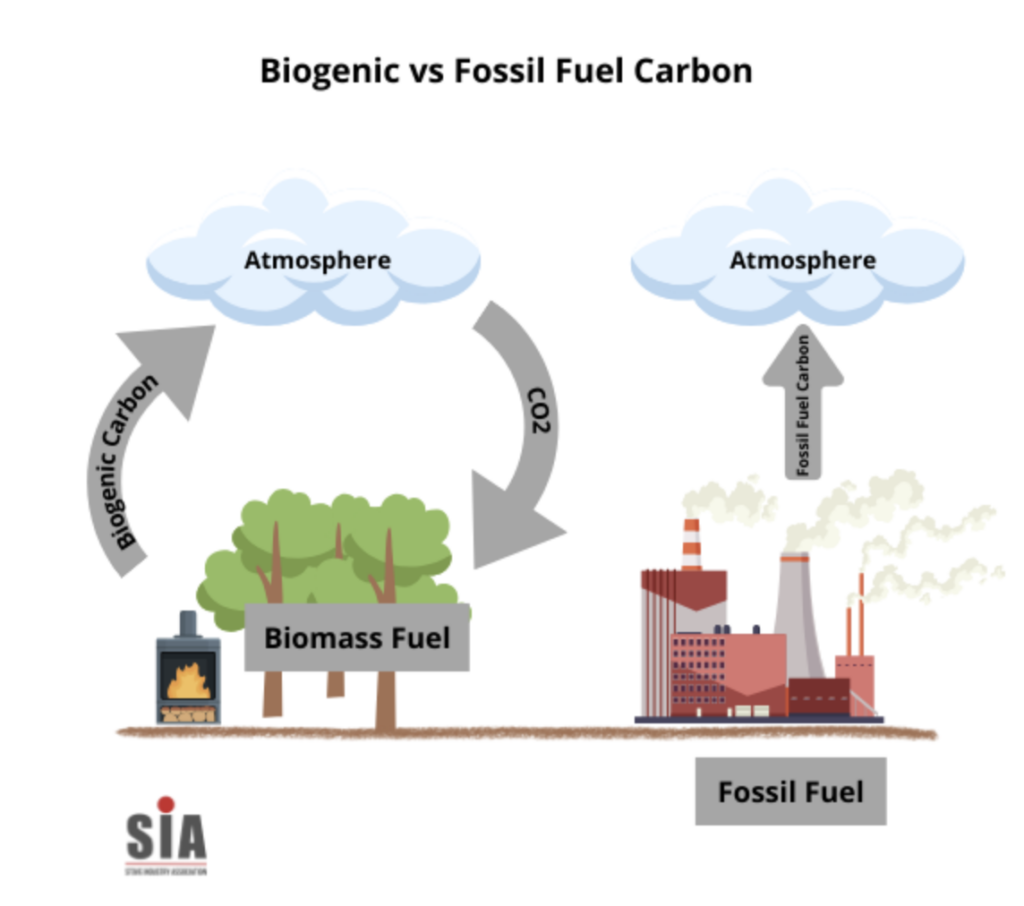What is Biogenic Carbon?
This is the carbon that is part of the natural carbon cycle, which also includes the carbon released when burning logs. As part of this cycle, carbon is stored in organic matter as things like plants and trees absorb carbon during photosynthesis. This stored carbon is released back into the atmosphere when the trees die and decay or are burnt as fuel. As this carbon is part of a relatively short-term cycle, it’s considered carbon neutral.
What is Carbon Neutral?
Carbon neutral relates to the amount of carbon dioxide (CO2) emitted into the atmosphere being equal to the amount absorbed, also known as net zero. If something is carbon neutral, it can generally be considered a sustainable, environmentally friendly method of doing something, whether that be heating or a form of transportation.
What is Fossil Fuel Carbon?
This type of carbon comes from organic matter that has been buried deep underground for millions of years and made into coal, oil or natural gas. When these fuels are burned, they release carbon back into the atmosphere. It is these types of fuels which contribute significantly to global warming. This is the reason why the world at large is very keen to reduce fossel fuel reliance.
It’s important to remember that both fossil fuel carbon and biogenic carbon contribute to CO2 levels in the atmosphere. But with biogenic carbon, it is part of a cycle. The diagram below, produced by the SIA, explains this.

Managing Sustainable Woodlands for Carbon Efficiency
Wood sourced for firewood must be from sustainable woodlands to ensure the highest level of sustainability. When it comes to forest management and the supply of firewood, there is misplaced worry among some that broadleaf forestry management activities reduce diversity, but this is untrue. According to the Small Woods Association and other sources, the opposite is true, and the reason is this: a closed canopy woodland does not allow sufficient light through to sustain much flora and fauna at ground level, whereas thinning has been shown to improve biodiversity by encouraging life throughout both canopy and ground levels.
Good forest management is beneficial for firewood supply, fast timber bulk growth, replenishment and biodiversity.
Effective management of sustainable woodlands and forests is essential if they are to continue to prosper and grow in the coming years. Managed woodlands are like a garden as they need constant maintenance. It is a careful job where trees are thinned to grow, and things like bramble are carefully managed to ensure they don’t dominate other plants.

Sustainable Woodland and Forest Key Facts:
a. Forests cover over 30% of the planet’s land area.
b. Forests contain most of the world’s biodiversity and almost as much carbon as in the atmosphere.
c. Directly and indirectly, forests and woodlands provide livelihoods for over one billion people.
d. Forests influence the availability of water, regulates surface and groundwater flows, and also help maintain high water quality.
e. Forests and trees reduce water-related risks such as landslides, floods and drought.
Using a Wood-Burning Stove
Burning wood on a high-efficiency wood-burning stove is a green and sustainable way to keep warm. Wood, as we have identified, is sustainable because, unlike fossil fuels, it’s limitless in its supply—as long as woodlands and forests are managed correctly. Wood can often grow at a quicker rate than it is consumed.
View our range of wood-burning stoves here.








